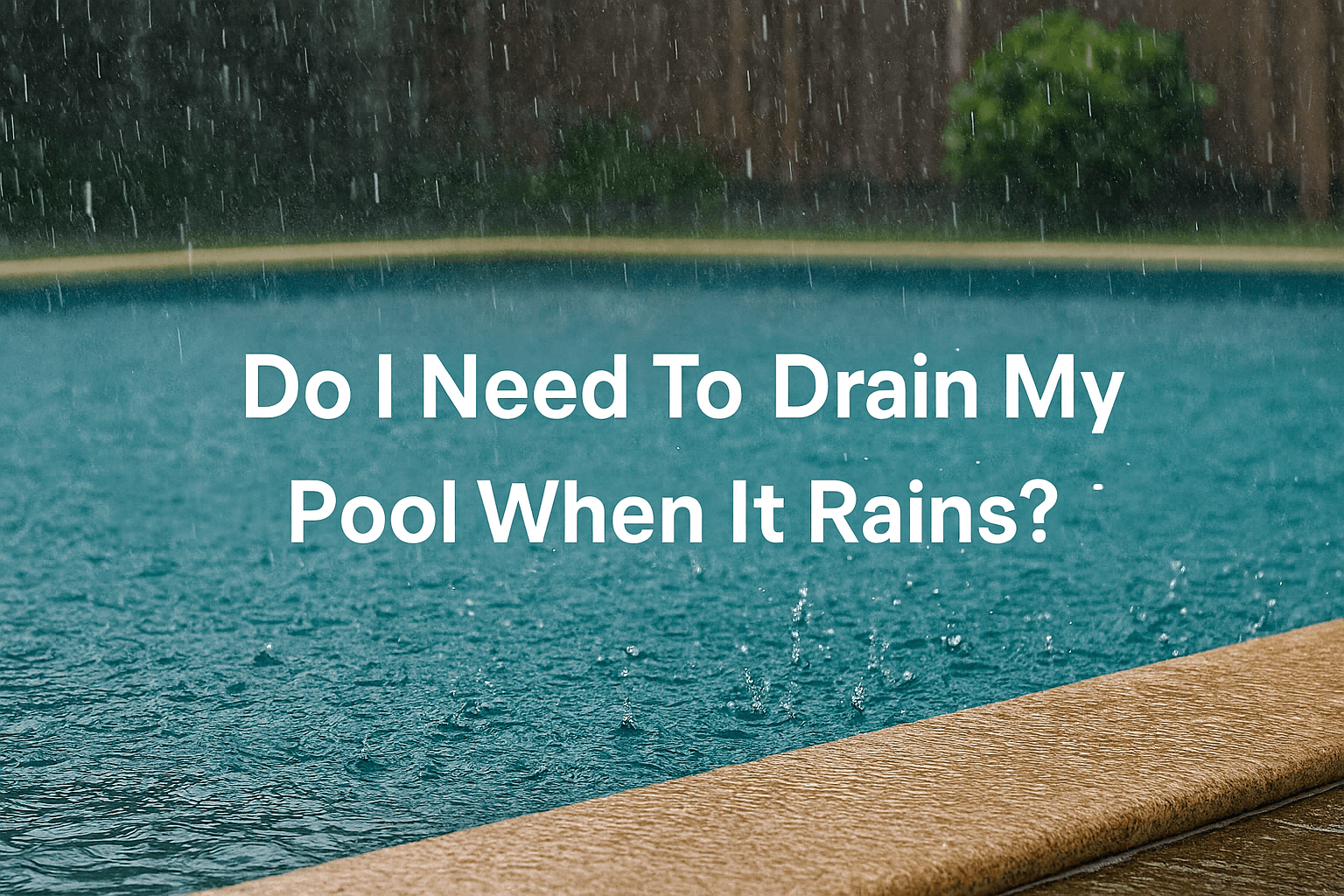
Do I Need To Drain My Pool When It Rains?
Rain again? Your pool’s turning into a mini reservoir, and you’re wondering — should you drain it? Short answer: usually no. Whether it’s an inground beauty or an above-ground container pool, the trick is knowing when a partial drain’s smart. Stick around for the when, why, and how.
Draining Your Pool in the Rain: What You Need to Know
We’ve all been there.
You wake up to the sound of rain hammering on the windows, look outside, and see your pool slowly turning into a mini lake.
Balancing pool care with work, family, and the British weather can be a bit of a juggling act. Rain doesn’t just mess with your weekend swim plans — it can throw your water chemistry off balance, send debris flying into the deep end, and even threaten to overflow the whole thing.
I’ve dealt with more than a few soggy pool days myself, and I know the stress it can cause. That’s why I’m here to share exactly what to do when the skies open — so your pool stays safe, clean, and ready for a dip when the sun finally shows up.

The Effects of Heavy Rain on Your Pool
The Impact on Water Level and Chemistry
How rainwater can raise the pH level
Rain may seem harmless, but when it mixes with your pool water, it can quietly change the balance. You might notice the water turning cloudy or the pH level creeping up — especially after a heavy downpour.
It’s a bit like making a cup of tea and accidentally pouring in twice as much milk. Everything’s still in there, but the balance is all wrong. That’s why it’s important to check and adjust your pool chemicals during rainy spells.
And let’s not forget what the rain brings with it — pollen, dust, and other bits floating in from the garden. Your filter has to work overtime to deal with all that, so give it some help by running it for longer than usual.
The risk of an overflow and damage to the skimmer
A little extra rainwater is fine — your pool can handle it. But if the water starts creeping up towards the top, you’ve got to act before it spills over.
Overflow can cause damage to the skimmer and even the surrounding paving or deck. Think of it like an overfilled bath… only a lot harder to mop up afterwards. Keeping an eye on the water level is the simplest way to avoid a costly mess.

Steps to Take After Heavy Rain
Skimming debris and re-testing chemicals
After the rain stops, grab your pool skimmer and get rid of any leaves, twigs, or other garden debris that’s blown in. It’s amazing how quickly a few soggy leaves can clog things up.
Once the surface is clear, it’s time for a water test. Check your pH, alkalinity, and calcium hardness. Getting these back in line quickly helps stop algae growth and keeps the water sparkling.
How to handle a sudden rise in water level
If the rain’s been heavy enough to raise the water level, you’ll need to let some out. Before you start, check that your pool’s drainage system is working properly and isn’t blocked by debris.
Sometimes a quick adjustment is all that’s needed — other times you might need a pump to help. The sooner you deal with it, the less chance of damage to your equipment or pool edging.

When a Partial Drain Might Be Necessary
How to Safely Lower the Water
Using a submersible pump or a siphon
If you’ve got more water than your pool can comfortably hold, a submersible pump or siphon is your best friend. These tools make quick work of lowering the level without causing damage.
Just remember — we’re not talking about emptying the pool completely. This is a targeted fix to keep things under control, not a full-blown drain.
The importance of not draining too much water
Completely draining a pool is rarely a good idea. Do it wrong, and you risk damaging the liner, tiling, or even the structure itself.
A partial drain is all about balance — removing enough water to prevent overflow, while keeping your pool’s systems and structure happy. In most cases, you’ll only need to take a little out before everything’s back to normal.
If you follow these steps whenever the rain rolls in, you’ll keep your pool safe, your equipment happy, and your water ready for swimming — even if the British weather doesn’t always play along.
Have you checked out our other posts?
How To Cool Above Ground Pools?
How to Winterize Above Ground Pool?
How To Drain Above Ground Pool?
How To Level An Above Ground Pool?
Should I Cover Above Ground Pool?
When Closing Above Ground Pool?
How Many Hours A Day Should An Above Ground Pool Run?
Do You Leave Your Above Ground Pool Pump On All The Time?



Leave a comment